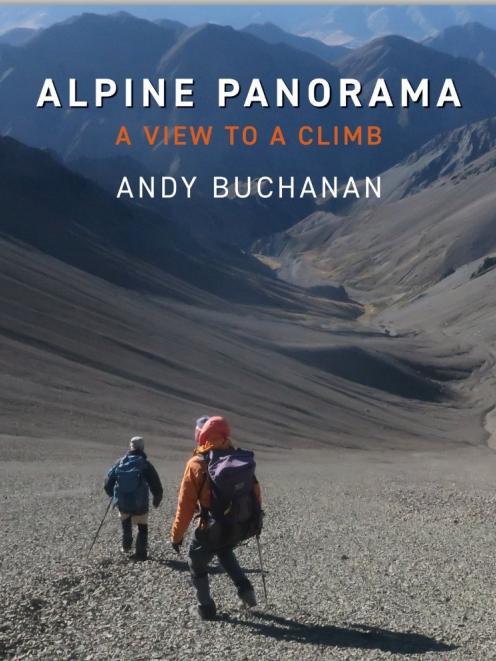
Whereas most of the neighbours simply saw an anonymous range on the horizon beyond the plains, hanging on the wall of the Buchanan household was a detailed panorama, naming each visible peak, with its height and distance from the viewpoint.
When he retired, he was again living there; by now the panorama had been handed down through the family and Buchanan had a lifetime of tramping and mountaineering under his belt.
An idea for a retirement project turned into mission to climb the 133 hills and mountains in view, and that has been chronicled in this book.
It would be easy for a book such as this to become a tedious litany, but Buchanan has successfully avoided that trap. After opening chapters on the human history of Canterbury and a general introduction to travelling in hill country, chapters group the peaks geographically. What follows is a mix of potted histories of the hills and environs, often with details of the naming history, and the stories of the author’s ascents. Some of the ascent descriptions are necessarily brief, which allows more space for the more interesting and, often, more challenging peaks. Tapuae-o-Uenuku, New Zealand’s highest peak outside the Southern Alps, is one example, while there is room for several ascents of Mt Rolleston in Arthur’s Pass National Park.
The most distant and highest peak visible in the panorama is Aoraki / Mt Cook, peeking up between the much-closer Mts Somers and Winterslow. Initially, Buchanan considered climbing it to be beyond him, but as completion of the panorama challenge drew closer, he looked into whether it might be feasible. The upshot was a guided ascent at age 70, which gets a brief chapter of its own.
Most of the photographs are Buchanan’s. The majority are of high quality, particularly those selected for reproduction at a larger scale, but a few appear to be there just to ensure a comprehensive record. A selection of the author’s oil paintings adds an interesting counterpoint.
The panorama that inspired all this activity was originally published in The Press in 1967. It and its accompanying text are reproduced in full, and then an excerpt at a larger scale heads up each chapter. A brief biographical note about its creator Ivan Pugh is included. Detailed maps by Wellington cartographic firm Geographx provide useful context and thorough end notes give the reader avenues for delving deeper.
While the main target audience must be those who have roamed the same hills or lived with that view, it is a lovely book for a wider readership with an affinity for wild places.
By DAVID BARNES
David Barnes lives in Lower Hutt and is an avid tramper and armchair mountaineer











